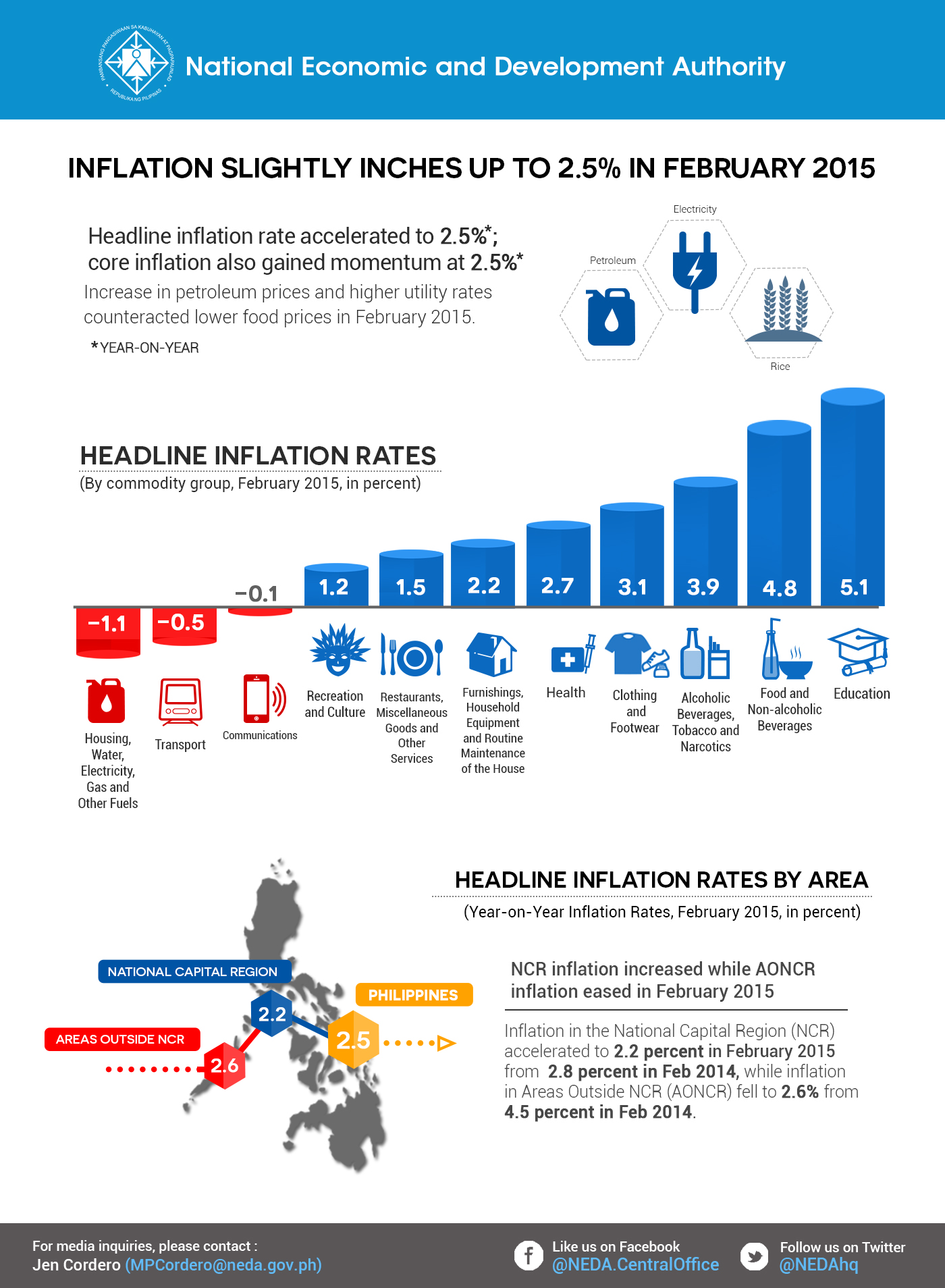MANILA – The uptick in petroleum prices and higher utility rates offset the slow increase of food prices and pushed headline inflation slightly higher to 2.5 percent in February 2015 from 2.4 percent in the previous month, according to the National Economic and Development Authority (NEDA).
Despite the slight increment, headline inflation for that month was well within market expectations and the 2.0 to 4.0 percent target set by the government for 2015 to 2016 and much slower compared with the 4.1 percent level in February 2014.
Economic Planning Secretary Arsenio M. Balisacan attributed the moderate inflation to the normalization of supply chain and relatively stable peso in the first two months of 2015. “There were no new major economic shocks such as adverse weather conditions. The supply chain also normalized, partly due to the easing of port congestion. The peso likewise remained relatively stable due to the country’s strong external position,” Balisacan said.
Core inflation, which excludes selected volatile food and energy prices, also went up at 2.5 percent in February 2015 from 2.2 percent in January 2015, but still lower compared with the 3.0 percent in the same month of the previous year.
The relatively lower reduction in the prices of electricity, gas, and other fuels (-8.9% from -11.3%) reflected an increase in oil prices in February 2015 relative to the previous month. Still, compared with the previous year, prices were significantly lower.
“The recent increase in oil prices was the result of cutbacks in the production and exploration of international energy firms triggered by soft oil prices. Outlook for prices in the medium term, however, remains modest given a backdrop of strong world crude oil supply growth and weak global demand,” said Balisacan, who is also NEDA Director-General.
For electricity rates, Meralco charges were up by 5.4 percent year-on-year equivalent to PhP0.30 per kilowatt hour. This was due to higher generation and transmission charges resulting from lower power plant availability in January 2015, which can be considered as an after-effect of the low demand after the long holidays.
Also, the increase in transport services to 3.3 percent in February 2015 from 1.5 percent of the previous month came after the implementation of higher MRT and LRT fare rates as observed in the higher transport inflation in the National Capital Region.
On the other hand, food inflation continued to decelerate in February 2015 from 5.6 percent to 4.9 percent reflecting softer upward adjustments in the price indices of rice, meat, and vegetables.
Inflation of rice continued to ease in February 2015 due to more favorable supply conditions and lower farm gate prices.
Balisacan noted that the favorable outlook on the production of agricultural commodities, particularly palay and corn, should further ease local price pressures in the coming months. However, the lingering possibility of El Niño occurrence in the first quarter of 2015 poses risk of inflation within the immediate term.
“Programs to increase productivity and ensure the sufficiency in the supply of key commodities are needed. Likewise important is addressing the looming power woes and creating better logistics supply chains to reduce production and transport costs,” said Balisacan.
–END–




